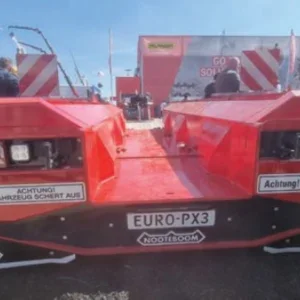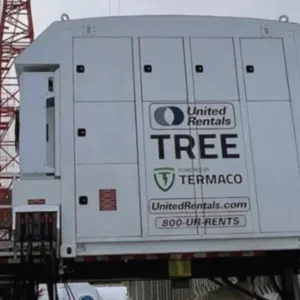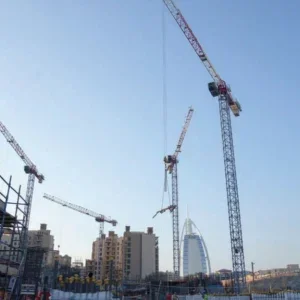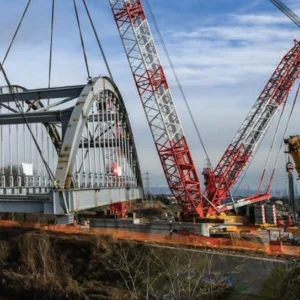Mountaineers know that careful planning and the correct equipment are vital to the success of any expedition. Similarly, contractors working on remote mountain locations need to focus on careful planning and the correct equipment to ensure work goes smoothly. A contractor building a new restaurant on the Arosa Weisshorn in Switzerland used a Potain tower crane to help with the job.
Before the building work could begin, there was the intricate task of transporting the crane to the jobsite. With the project taking place at an altitude of 2653 m, this required careful planning, highly skilled technicians and the lifting power of the largest helicopter operating in Switzerland.
Potain dealer Stirnimann chose a topless MDT 132 to supply to sub-contractor Andrea Pitsch for work on the restaurant, which includes staff accommodation, a ski room, cold storage and kitchen in addition to a grand upper floor dining area that will seat 182 people.
Lorenzo Cassani, president and general manager at Stirnimann, said that although difficult, the assembly project was not especially unusual for his company.
“We have our own team of Manitowoc Crane CARE technicians on hand who know the region, the environment and the equipment. Our Manitowoc Crane CARE technicians are highly skilled and every year we handle around 1000 assembly and disassembly operations, including a number by helicopter,” he said. “We even have technicians that are specially trained for this task. We have been focused solely on the lifting industry for over 35 years and have good in-depth knowledge of the Potain product which means our customers have great faith in our ability and we have developed a very good reputation for these mountainside projects.”
Stage one of the assembly was the transportation of all tower crane components to the Midway Station using the mountain’s cable car system. Once here, at an altitude of 2010 m, they were taken the final 650 m up the mountain by the Kamov heavy-lift helicopter operated by local company Helog-Heliswiss. The giant helicopter has a co-axial rotor of 15.8 m diameter and is powered by two 1660 kW turboshaft engines.
Lorenzo Cassani said that Potain design was a major factor in getting the crane on-site in the fastest and most economical way.
“Potain cranes are well-known for their ease of assembly and on a project like this, you can really see how that makes a difference,” he said. “The total weight of the crane is 30 t and it is larger than many cranes that would be selected for a project such as this. But the nature of the construction required the lifting ability of the Potain. We fitted a 50 m jib and erected the crane to 22 m height under hook, but we managed all this in only 17 trips with the helicopter.”
First elements installed were five mast tower sections ranging up to 5 m in length and each with a cross-section of 1.6 m x 1.6 m. Further flights bought the slew ring element, the jib sections, counterjib and two flights for the counterweight sections which made up the heaviest individual load at 3.2 t.
The whole assembly process was completed in a day thanks to the planning and skill of those involved, Cassani said.
“The large amount of planning we put in to this assembly process was rewarded on the day,” he said. “But there was still a lot to do once the crane arrived on site. For example, to bolt the slew ring to the structure our technicians used their torque wrenches to install 116 bolts. A very difficult task in such an exposed location.”
The restaurant is currently under construction for client Aroser Bergbahnen, a mountain railway owner. The hexagonal structure was designed by renowned Zurich architects Tilla Theus & Partners and is under the management of general contractor Implenia Generalunternehmung.
The Potain MDT 132 has a maximum capacity of 8 t and can lift 2.2 t at 50 m. It will help place the 750 cu m concrete and 500 sq m of pre-cast concrete used in the structure.
The Kamov heavy-lift helicopter has a dual rotor The Kamov heavy-lift helicopter has a dual rotor After the central cabin, riggers attach the Potain backmast After the central cabin, riggers attach the Potain backmast Two riggers hold jib tag lines Two riggers hold jib tag lines Helog-Heliswiss’s Kamov helicopter installs a Potain tower crane Helog-Heliswiss’s Kamov helicopter installs a Potain tower crane The Potain MDT 132 crane takes shape The Potain MDT 132 crane takes shape






